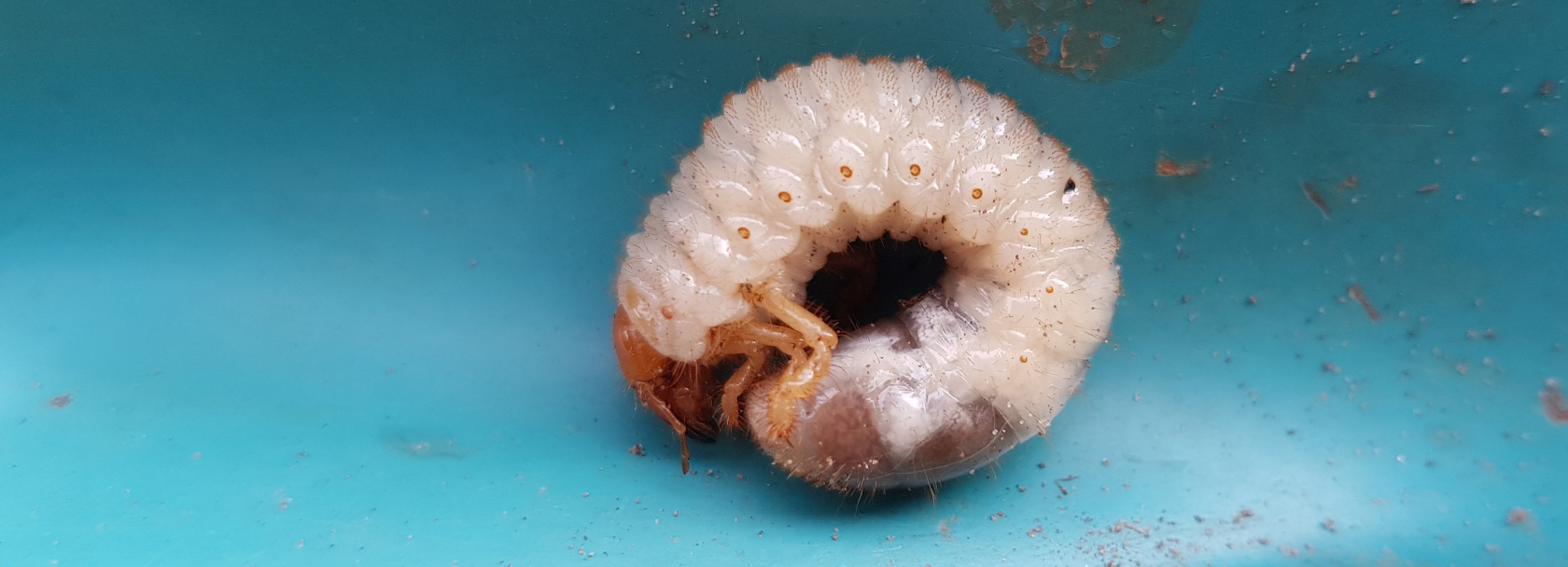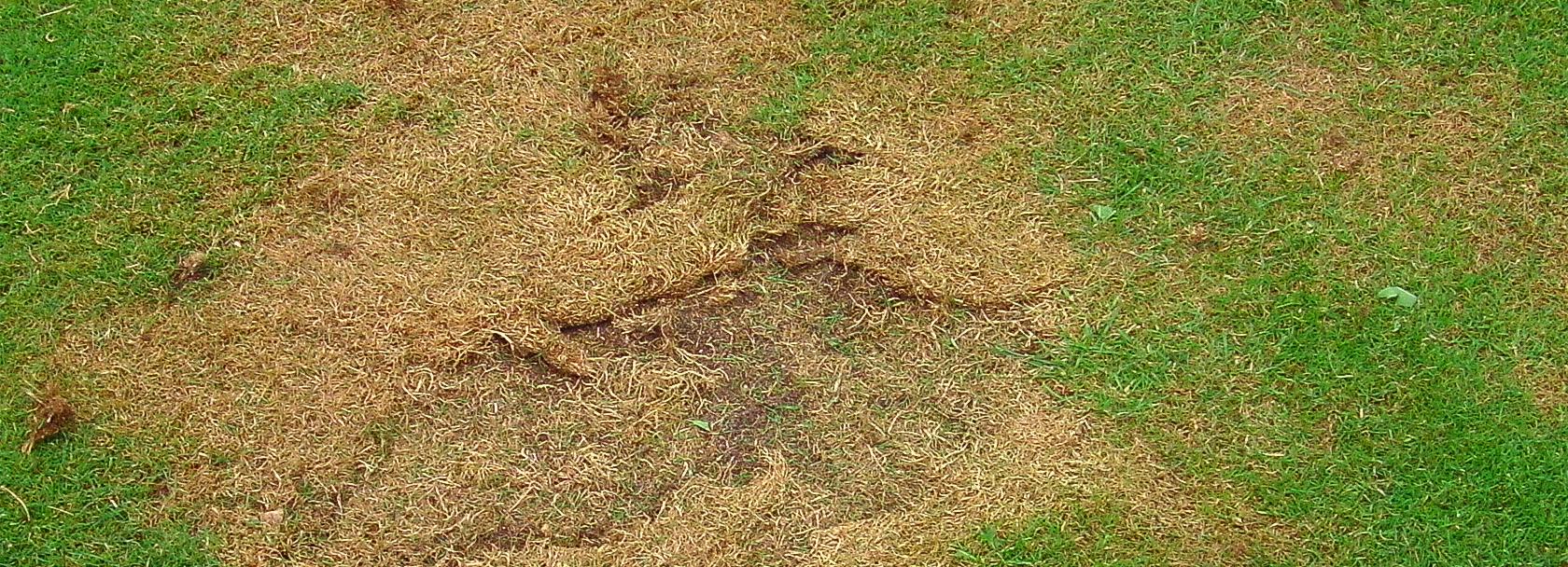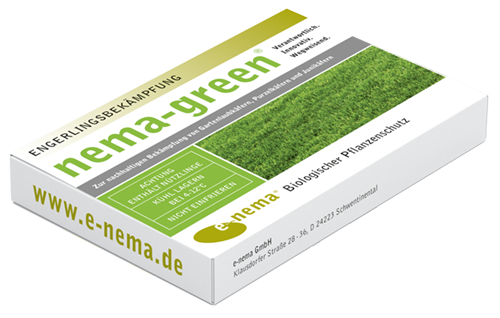Summer chafer
Control summer chafer biologically
Amphimallon solstitale
The summer chafer, also known as the june beetle, is a common pest on lawns. It belongs to the leaf horn beetle family (lat. Scarabaeidae). The June beetle is a brownish beetle about 1.5 - 1.8 cm in size. It flies in larger swarms at dusk, flight time is in June.
The larvae of the June beetle are called grubs. The 1st larval stage can be successfully controlled with nematodes, but damage is not yet visible then. The stages L2 - L3 can only be collected.
Life cycle of the summer chafer
The beetle needs several years for its development. The female lays about 35 eggs in the soil at the place where she hatched herself once, light sandy soils are preferred.
First year: The 1st larval stage hatches in July/August and moults to the 2nd larval stage, which stays below the frost line to overwinter.
Second year: Starting in June, the 3rd larval stage comes up to feed on roots and migrates back below the frost line to overwinter.
Third year: in spring the 3rd larval stage pupates, and in June the beetles hatch.
What do the June beetle grubs look like?
1st larval stage approx. 1 cm
2nd larval stage about 2-3 cm
3rd larval stage up to 5 cm
The grubs of the June beetle move forward in prone position, they are creamy white with brown head capsule.

Damage caused by summer chafer grubs
The main damage is caused by June beetle grubs in the 3rd larval stage. They feed underground on the grass roots, hindering water and nutrient uptake by the plants. June beetle larvae cause brown spots in the turf, the turf is easily pulled off, masses of grubs appear; dry turf in places.
Birds and other animals (e.g. wild boars) also destroy the turf by pecking and burrowing in search of the tasty grubs. Infestations include private lawns, public green spaces, sports turf, and golf courses.
Damage caused by adult summer chafers
Damage is caused by the adult beetle when it occurs in masses. The beetle then eats the leaves of deciduous and fruit trees.

June beetle control with useful nematodes
Nematodes are tiny, filamentous soil organisms about 0.6mm long. They are natural enemies of the June beetle. The nematode species Heterorhabditis bacteriophora specializes in, among other things, June beetle grubs and can use them for its own feeding and reproduction. The nematodes are supplied alive in a powder. For application, they should be mixed with water exactly according to package directions and applied to the affected areas.
Which stages of the June beetle can I control?
Only the 1st larval stage in August/September is susceptible to nematodes.
